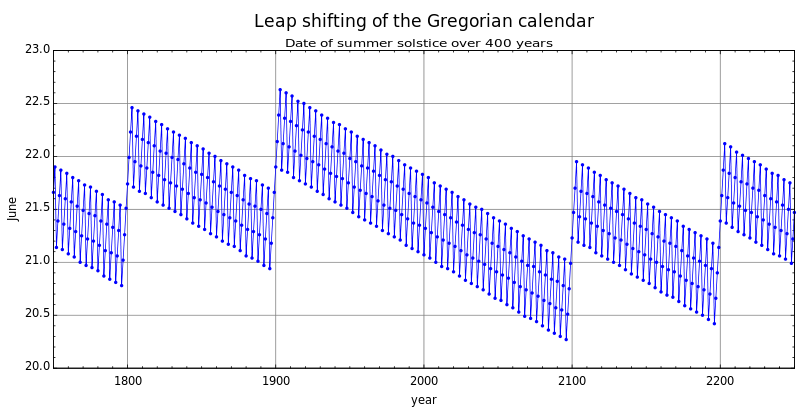Time has always been a fascination for humans. Just look at our sayings: we can save time, waste time, kill time, take our time, be pressed for time, run out of time, let time slip through our fingers, stall for time, be just in time, spend time, make time, have free time, be on time, have a tough time, watch time fly, watch time crawl, have a great time, be out of time, or even take time off. But despite all of this and our understanding of the theories of relativity, we have not yet been able to travel through time. That is, unless you discount the ten days that were skipped from October 4 to October 15 in 1582.
Let’s start with a flashback to 46 BC when Julius Caesar introduced the Julian Calendar. It was a simple design, consisting of 365 days with a 366th day being inserted every four years. This made a year 365.25 days on average, which roughly corresponded to what it actually was and it provided a simple rule to correct for seasonal drift. Unfortunately it wasn’t easy converting from the existing calendar to the new one, and it resulted in the “Year of Confusion” in 46 BC – the year had 445 days.
Jumping ahead to 325 AD, the first official council of the Christian Church meet in Nicaea to discuss Easter. The date for Easter is based on a complicated formula (you can see the current formula here) based on the vernal equinox (the “first day of spring”) and the cycle of the moon. In order for Easter to fall at roughly the same time each year, they set March 21st to be the vernal equinox. Unfortunately, the Julian calendar’s estimate of a year as 365.25 days was a bit too much, resulting in a drift of one day every 130 years.
Fast forward to 1582 and 1257 years have passed since March 21st was made the vernal equinox. By this point, the calendar was 10 days off from what it should be and so Pope Gregorius XIII (with the help of astronomer Christopher Clavius) determined that they would have to skip 10 days to get things back on track. Thus everyone in Venice, Spain, Portugal, France, the Dutch Republic, and Southern Netherlands made the transistion in 1582, while other countries wouldn’t follow until decades later, with Russia finally converting in 1918. If the change to the Julian calendar could be called the Year of Confusion, this is surely the Centuries of Confusion as the date difference only got worse as the years passed, reaching 13 days by the time Russia switched. Until everyone used the new Gregorian calendar, countries and their citizens needed to know how to switch between the two calendars.
Even in those countries that changed right away, it wasn’t a smooth transition. There was a lot of outcry from the public about religious ceremonies during those times. Since 10 days had been skipped, what happened to those celebrations? And would celebrating them on the new calendar days appease their deities as well as before the change? Even worse, Pope Gregorius XIII knew that his new calendar had to work better than the old one, so he corrected how leap years worked:
- They would happen every 4 years
- Every 100 years their wouldn’t be a leap year
- Every 400 years there would
Thus over four hundred years there would only be 97 leap years instead of 100, leading to an average year of 365.2425 days. The other change involved the equinoxes and solstices no longer being fixed to a specific date. As seen in the image above from Wikipedia, the summer solstice (the “first day of summer”) moves around by day over hundreds of years.
Of course this isn’t the end of the story. As the millennia wear on, addition corrections will need to be made. Earth’s rotation will slow from the Moon’s pull, Jupiter will slowly precess Earth’s axis, and changes on the surface of our planet alter its mass distribution and thus its rotation speed. In time, our descendants might once again leap into the future.
Today’s Tangent: You’ve heard of leap years, but have you heard of leap seconds? Due to the small changes in Earth’s rotation mentioned above, days aren’t exactly 24 hours. Over years these small differences add up from millseconds to seconds, and a leap second must be added, creating the time 23:59:60. Since the creation of the idea in 1972, 25 leap seconds have been added, most recently on June 30, 2012. Unfortunately, due to changes on Earth itself from earthquakes and other events, it’s impossible to know when the next leap second will need to be scheduled.
